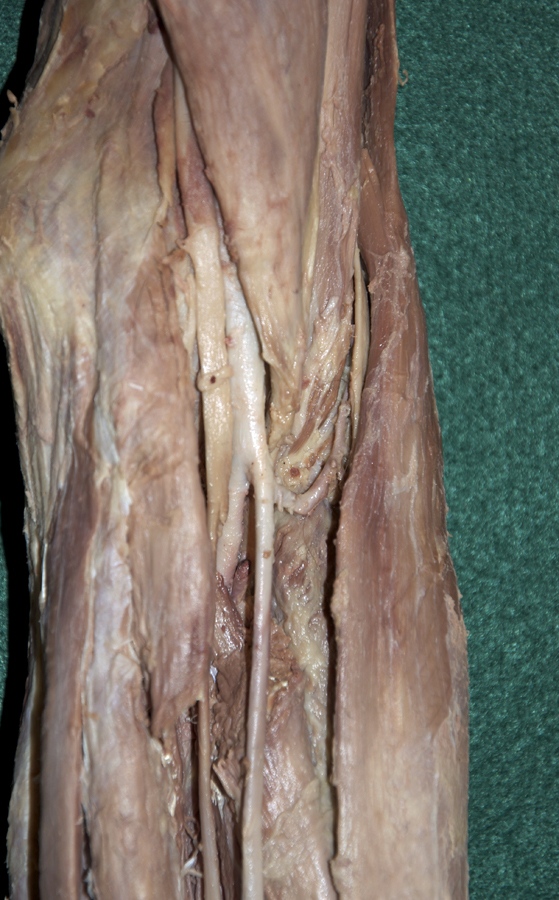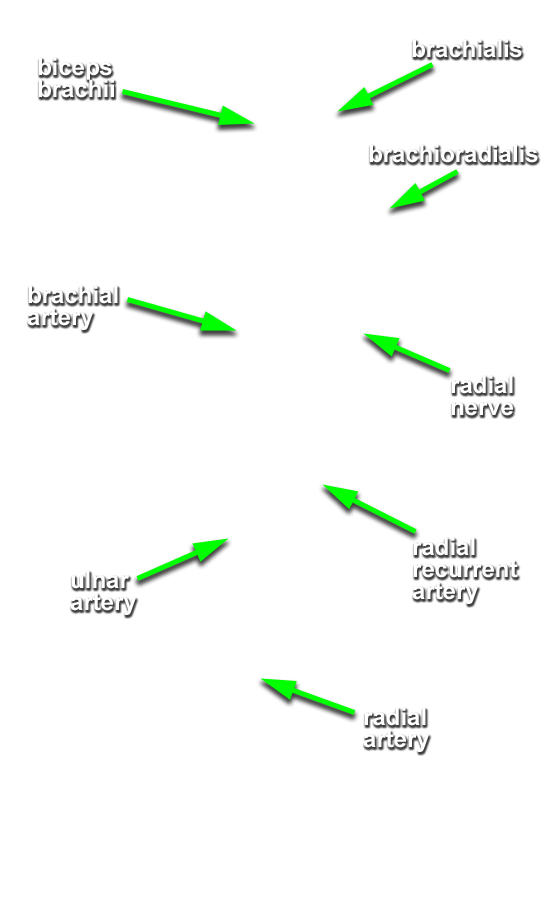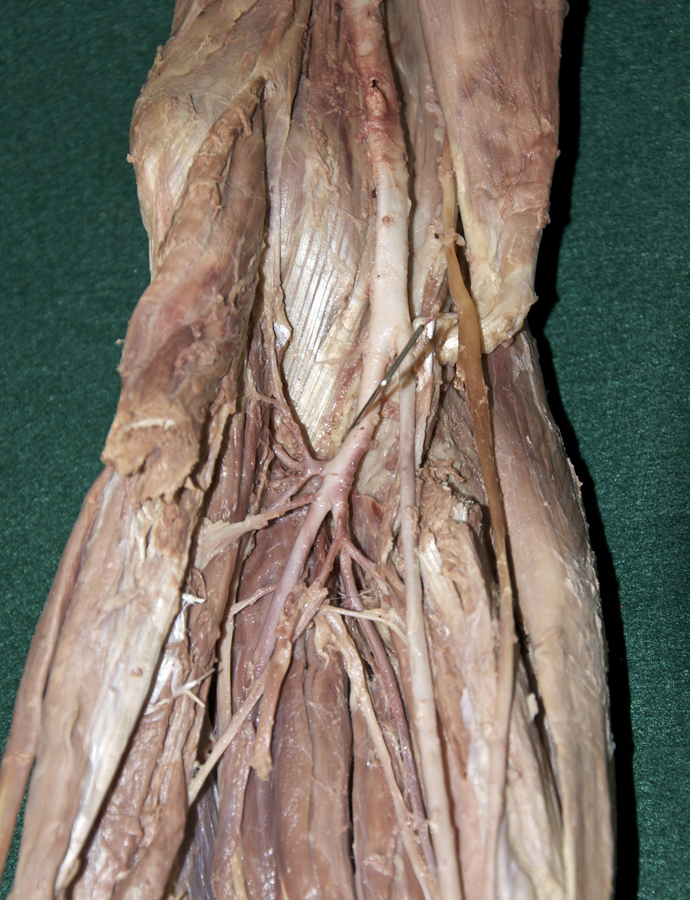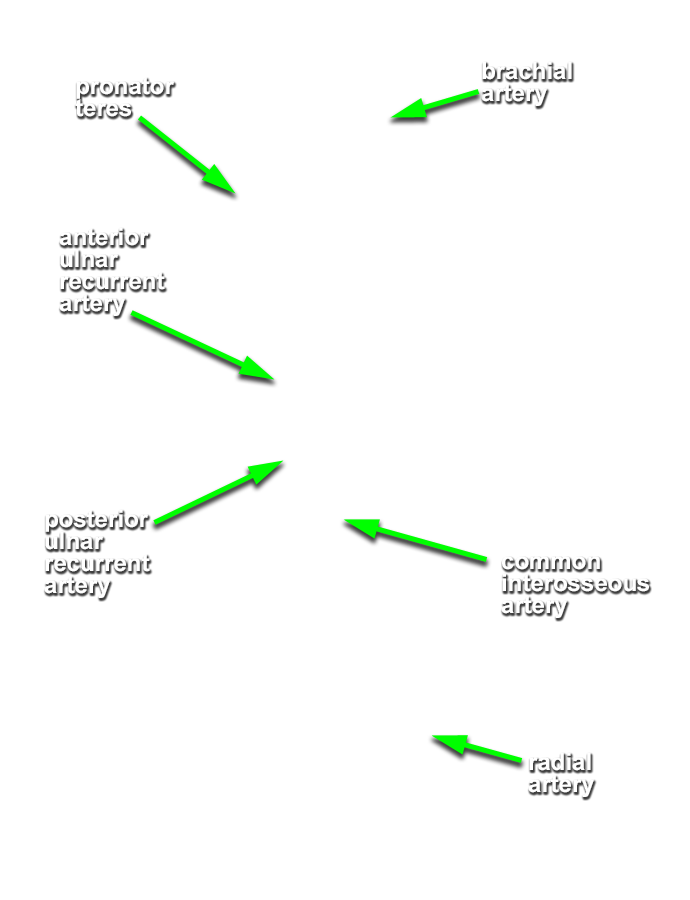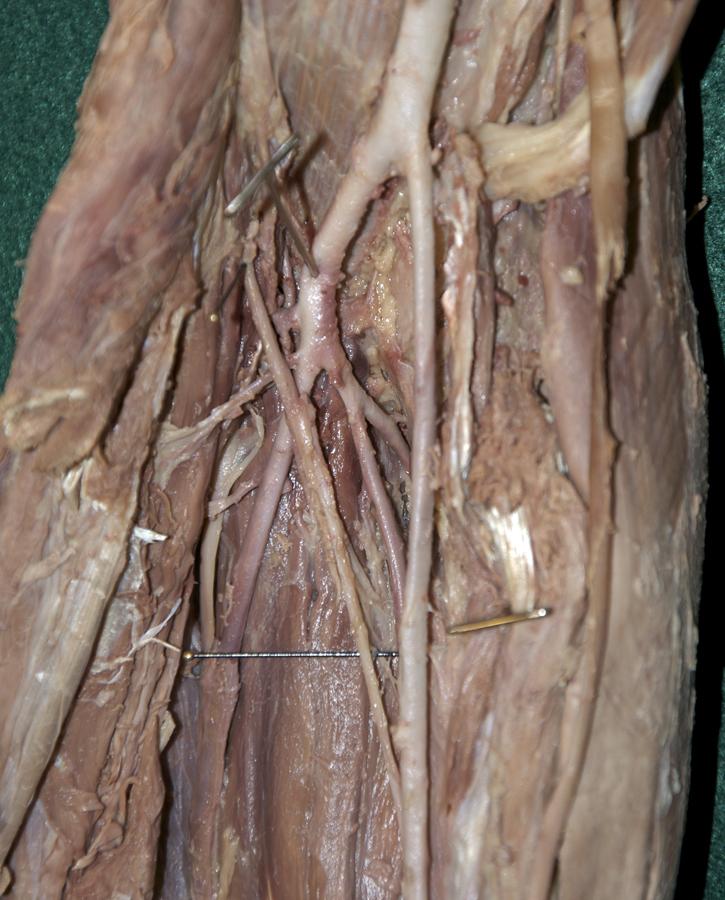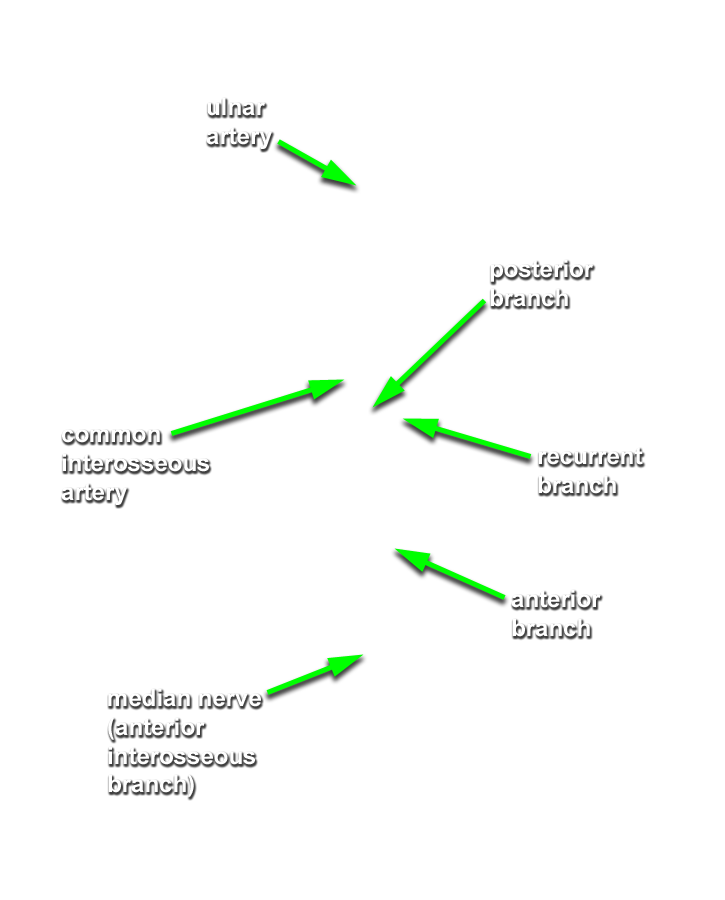(ON THE LEFT SIDE ONLY) Expose and identify the branches of the radial and ulnar arteries in the forearm. (G T2.11, 2.60B and 2.65B;N 433;Gl 28.37)
- Return to the brachial artery proximal to the cubital fossa. Trace this artery distally until it bifurcates into the radial and ulnar arteries.
- Clean (remove the associated veins) the radial artery and identify the recurrent radial artery. The recurrent radial artery is typically adjacent to the deep branch of the radial nerve. (G 2.64B;N 433;Gl 28.37C)
- Clean (remove the associated veins) the ulnar artery. Identify the common interosseous and posterior ulnar recurrent arteries. (G T2.11;N 434;Gl 28.4B) You may not be able to identify these arteries on the right forearm with the intact pronator teres and flexor digitorum superficialis. Attempt to identify the anterior ulnar recurrent artery. Clean the common interosseous artery. Identify the anterior and posterior interosseous arteries. (G 2.60B;N 434;Gl 28.4B) Attempt to identify the recurrent interosseous artery.
- Return to the median nerve. Observe the many branches of the median nerve innervating most of the muscles of the anterior compartment of the forearm. Attempt to identify and trace the anterior interosseous nerve.
Important Relationships
- The brachial artery passes anterior to the elbow joint.
- The brachial artery passes posterior (deep) to the bicipital aponeurosis.
- The radial collateral (or radial recurrent) artery passes directly anterior to the humerus (lateral epicondyle).
- The inferior ulnar collateral (or anterior ulnar recurrent) artery passes directly anterior to the humerus (medial epicondyle).
